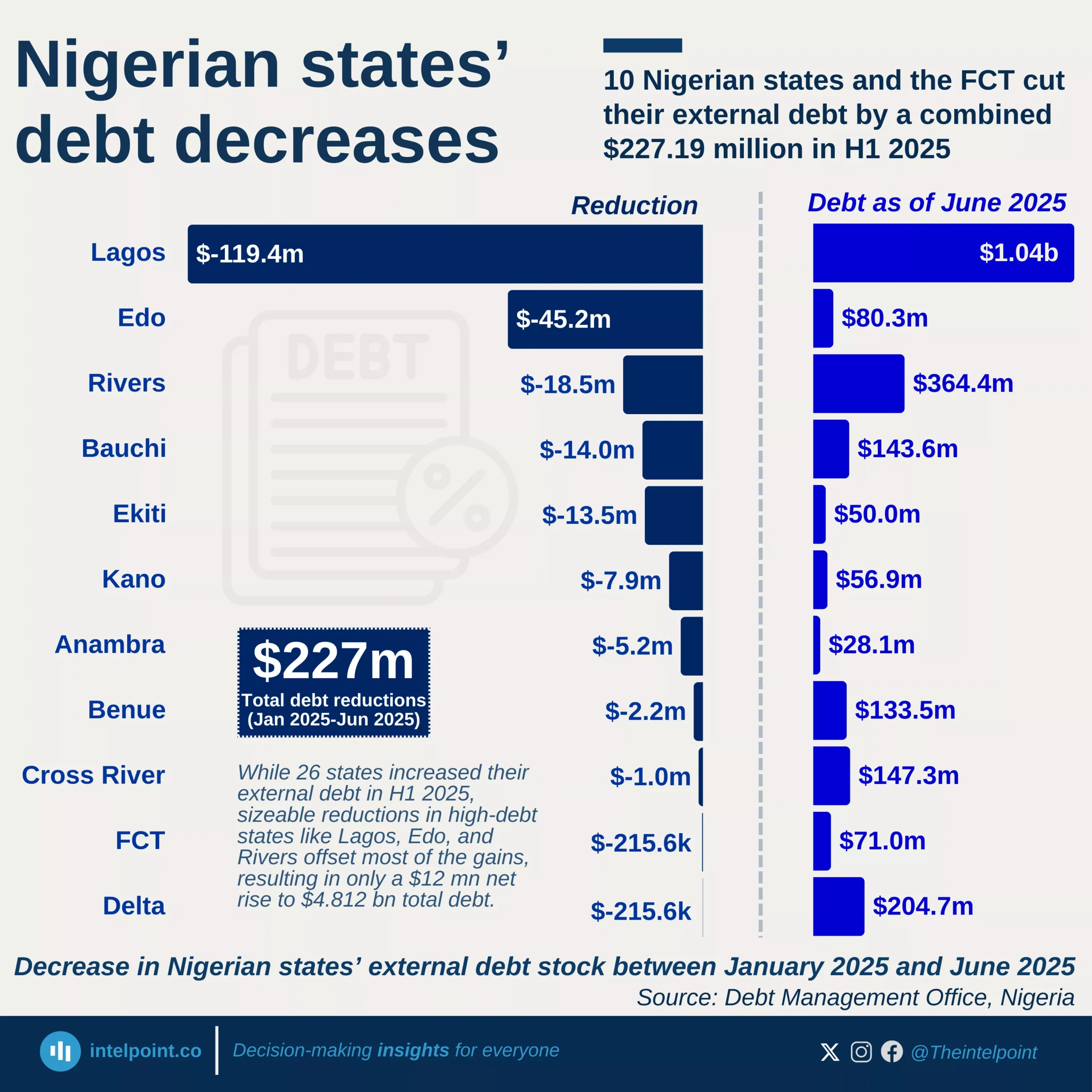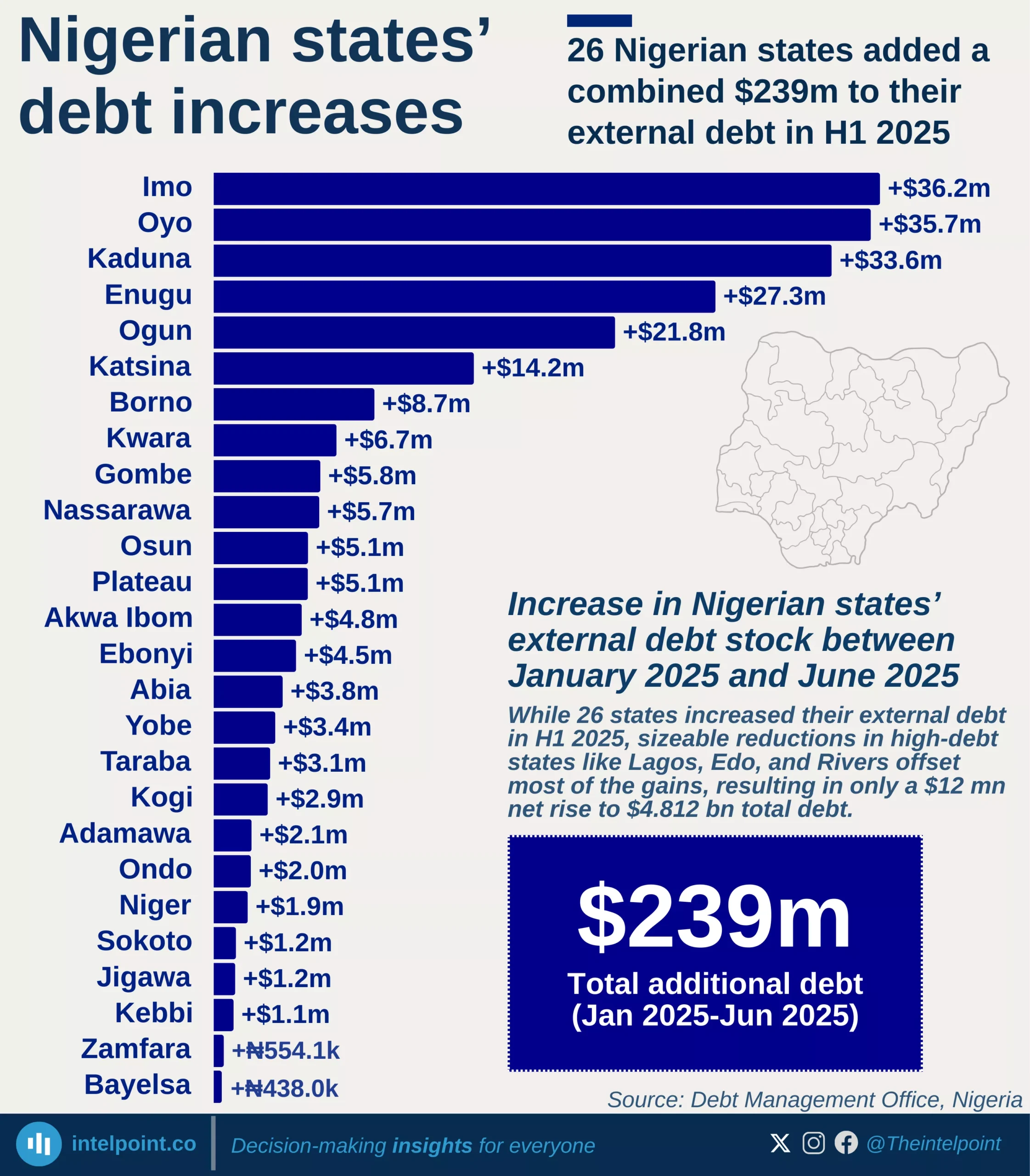Between January and June 2025, Nigeria spent roughly $2.3 billion repaying external debts, a clear reflection of the country’s mounting fiscal pressure. The IMF and Eurobond holders together absorbed nearly two-thirds of total payments, highlighting the growing weight of non-concessional and market-based obligations. Meanwhile, payments to traditional development partners such as the World Bank’s IDA and the African Development Bank indicate Nigeria’s continued dependence on multilateral support for long-term financing.
China, once a dominant creditor, received comparatively smaller repayments this period, hinting at either maturing loans or a strategic debt management shift. Overall, Nigeria’s debt service pattern in the first half of 2025 underscores a tightening fiscal space, where more resources are directed toward debt repayment than developmental expenditure.





